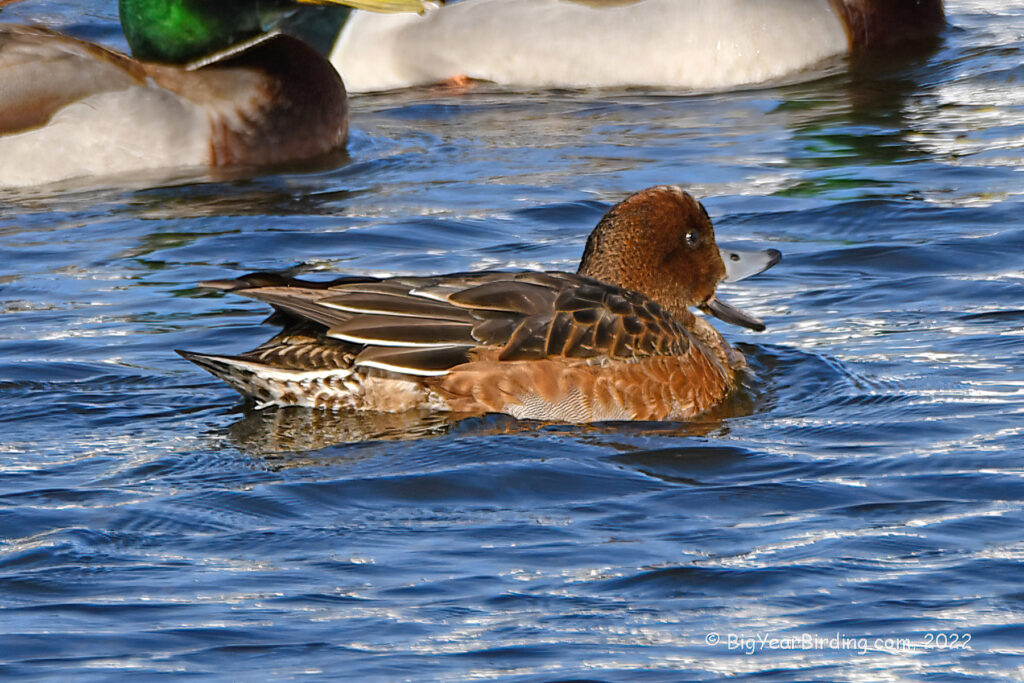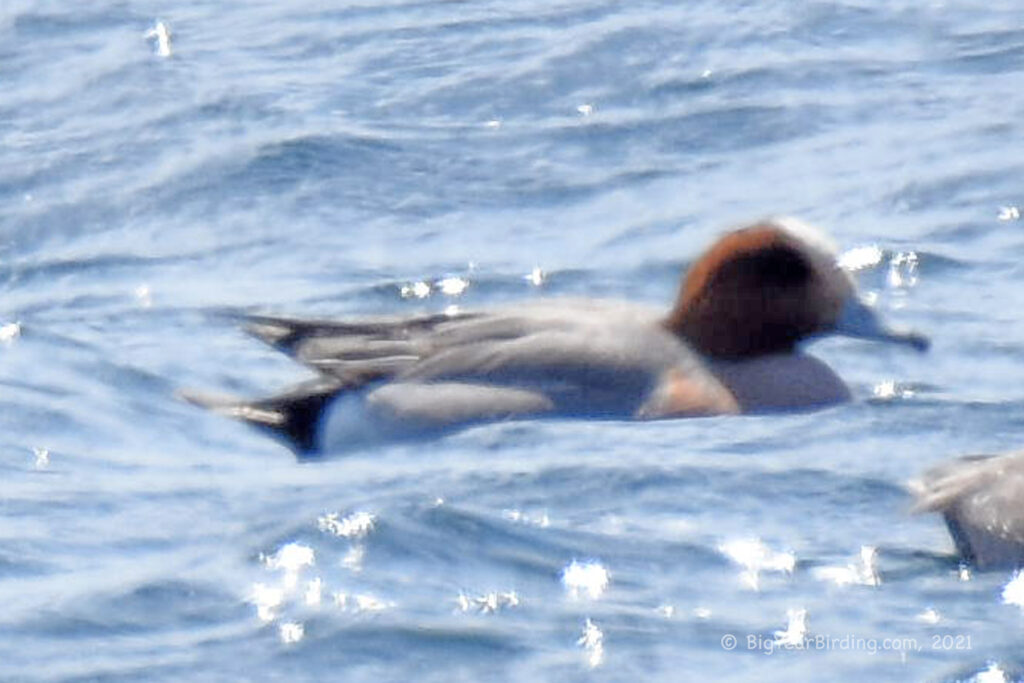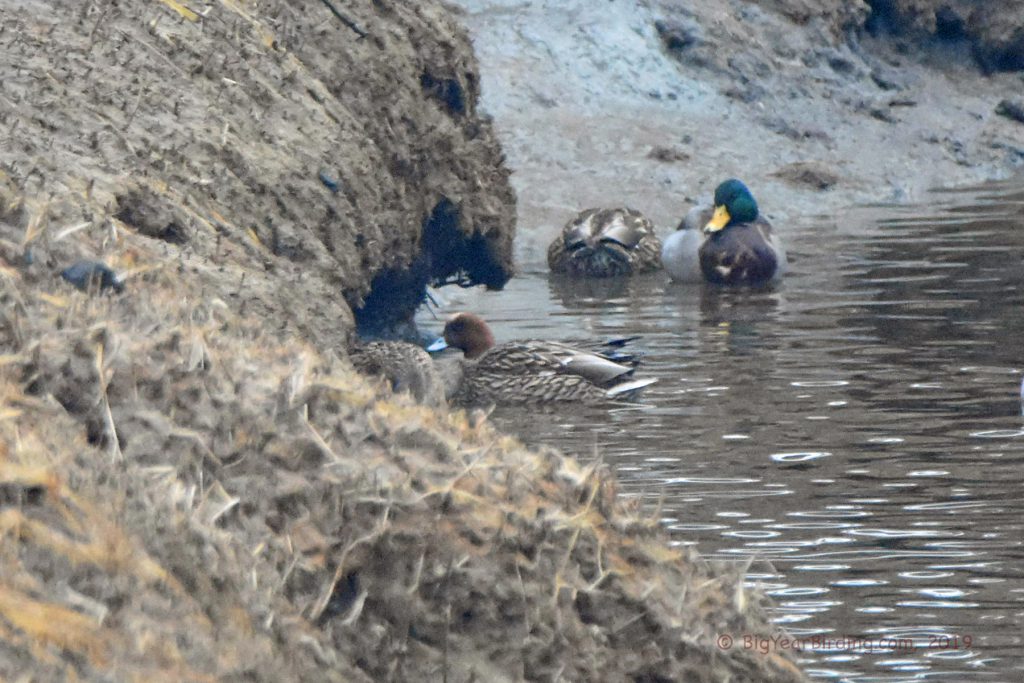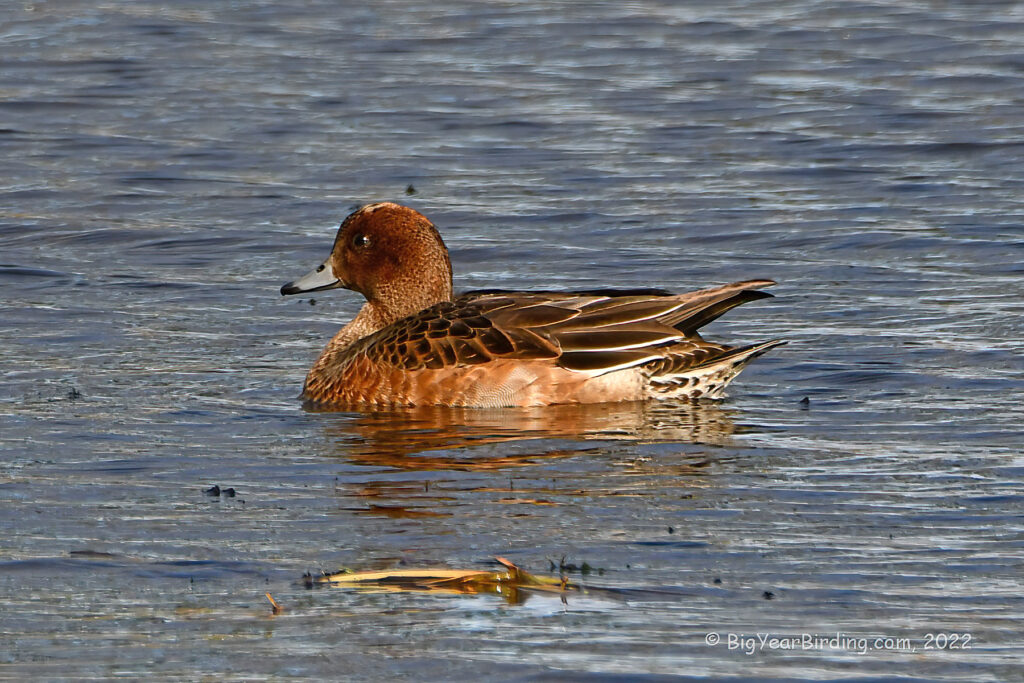
The Eurasian Wigeon (Mareca penelope) is a medium-sized dabbling duck that breeds in the Arctic and subarctic regions of Europe and Asia. Adult males, known as drakes, have a distinctive plumage with a rust-colored head and creamy-yellow forehead. The back and wings are grayish-blue with bold white wing patches. The breast and sides are chestnut-brown, while the belly and flanks are white. Females, or hens, are duller in appearance with a brownish-gray head and speckled brown body. Both males and females have a blue-gray bill with a black tip and a distinctive white crown stripe.

Eurasian Wigeons measure around 19 inches in length and weigh about 1.5 pounds. They have a wingspan of approximately 30 inches. During the breeding season, males are larger than females, but this size difference is not noticeable during the winter months. Juvenile birds have a similar appearance to females, but they lack the white crown stripe and have a darker body.
Eurasian Wigeons are migratory birds that breed in northern Europe and Asia and migrate to southern Europe, North Africa, and South Asia during the winter months. In North America, they are considered a rare vagrant, and their presence is mostly limited to the Pacific coast. These ducks prefer wetlands, shallow ponds, and marshes during the breeding season and are often found in flocks during migration and winter.
One of the distinguishing field marks of Eurasian Wigeons is their unique whistle-like call, which is a wheezy “whieu-whieu.” They are also known for their dipping feeding behavior, where they submerge their heads and upper bodies to feed on underwater vegetation. Another identifying characteristic is the bold white wing patches, which are visible during flight and make them easy to distinguish from other dabbling ducks.

In terms of conservation status, the Eurasian Wigeon is listed as a species of “Least Concern” by the International Union for Conservation of Nature (IUCN). However, their population has experienced a decline in recent years due to habitat loss, hunting, and pollution. Efforts are being made to protect their breeding and wintering habitats and reduce hunting pressure to ensure the continued survival of this species.

